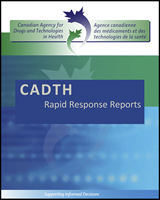For many patients with advanced stages of head and / or neck (HN) cancer, oral nutrition does not provide enough nourishment during treatment with chemoradiotherapy (CT) and / or radiotherapy (RT) due to the acute toxicity of treatment, obstruction caused by the tumour, or both. It has been reported that these patients are more likely to experience nutritional depletion than patients with any other cancer during all illness phases. Many patients enter treatment with weight loss and up to 80% lose additional weight during treatment; poor nutrition is linked with poor prognoses. In these cases, enteral nutrition (i.e., delivered straight to the intestine) is considered the best option.
Non-oral / enteral supply of nutrients can be delivered directly into the stomach via a nasogastric (NG) feeding tube inserted through the nose into the stomach, or via a percutaneous endoscopic gastrostomy (PEG) inserted through the skin of the abdomen directly into the stomach. The latter can be inserted prophylactically before treatment starts or reactively when the patient needs it. The optimal method of non-oral feeding is controversial. Although several groups have developed predictive models to determine which patients will benefit from feeding tubes and when, others believe the situation is too complex and multifactorial to make this type of tool usable.
The purpose of this report is to assess the literature reporting on NG feeding tubes versus PEG for this patient group, including the guidance contained in relevant evidence-based CPGs.
Disclaimer: The Rapid Response Service is an information service for those involved in planning and providing health care in Canada. Rapid responses are based on a limited literature search and are not comprehensive, systematic reviews. The intent is to provide a list of sources of the best evidence on the topic that CADTH could identify using all reasonable efforts within the time allowed. Rapid responses should be considered along with other types of information and health care considerations. The information included in this response is not intended to replace professional medical advice, nor should it be construed as a recommendation for or against the use of a particular health technology. Readers are also cautioned that a lack of good quality evidence does not necessarily mean a lack of effectiveness particularly in the case of new and emerging health technologies, for which little information can be found, but which may in future prove to be effective. While CADTH has taken care in the preparation of the report to ensure that its contents are accurate, complete and up to date, CADTH does not make any guarantee to that effect. CADTH is not liable for any loss or damages resulting from use of the information in the report.

